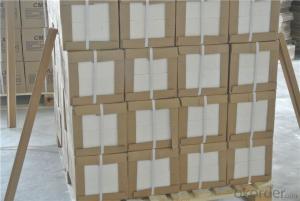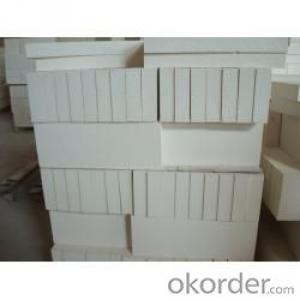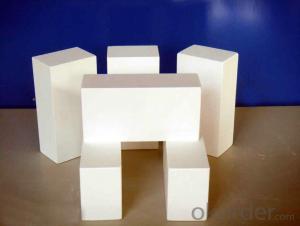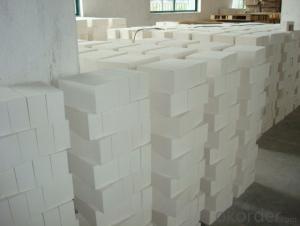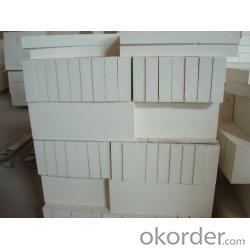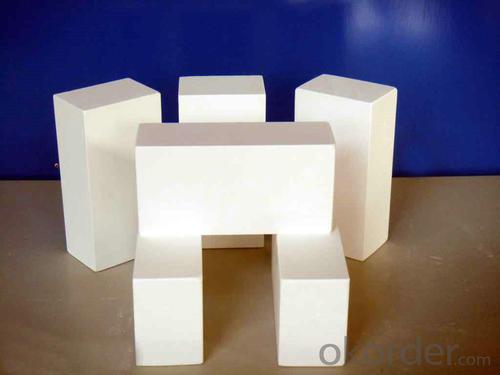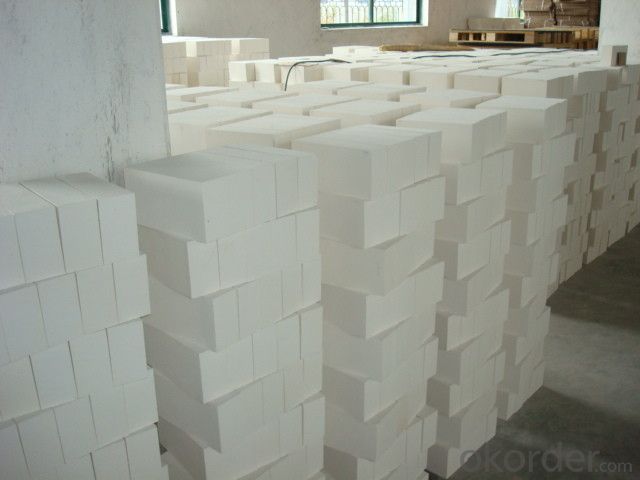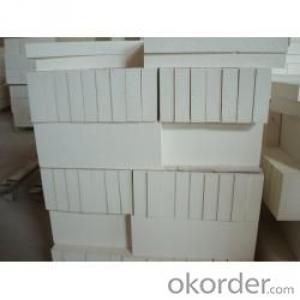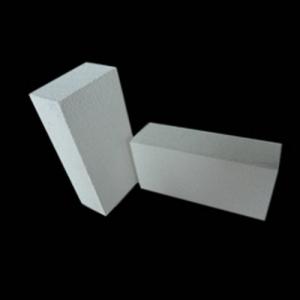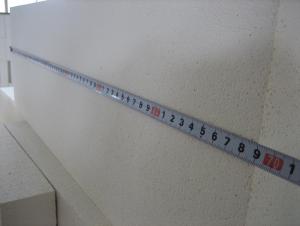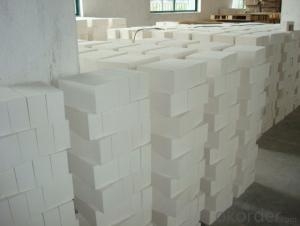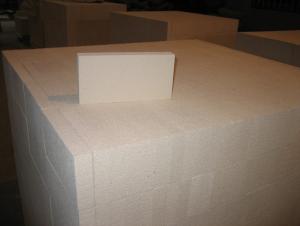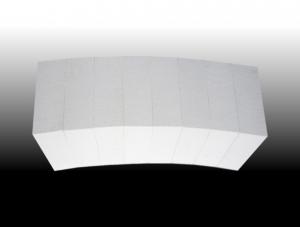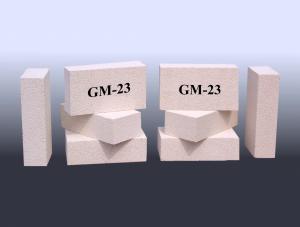Insulating Fire Brick - JM Mullite Thermal Storage Bricks Thermal Insulating Brick
- Loading Port:
- Tianjin
- Payment Terms:
- TT OR LC
- Min Order Qty:
- 2 m.t.
- Supply Capability:
- 1000 m.t./month
OKorder Service Pledge
OKorder Financial Service
You Might Also Like
Bubble Alumina Brick. We stock in both 2.5 & 3” sizes. We also carry double bump interlocking anchor styles. For use up to 1800C, these brick have excellent insulating properties as well as high hot strengths.
Insulating firebrick, we carry produces thirteen types of Insulating Fire Brick for use in applications from 2,000°F (1,093°C) to 3,200°F (1,760°C). Each type is formulated to meet specific thermal and physical requirements and after firing is machined to precise tolerances.
Made from high purity refractory clays and other ceramic raw materials, these insulating fire brick contain a carefully graded organic filler which is burned out during manufacture to give a uniform controlled pore structure.
Advantages of bubble alumina brick.
High Insulating Va
The high compressive strength of bubble alumina brick allows for self-supporting structures at elevated temperatures. Insulating fire brick are compatible with dense fire brick and add strength to the whole construction.
.
Strong
The high compressive strength of bubble alumina brick allows for self-supporting structures at elevated temperatures. Insulating fire brick are compatible with dense fire brick and add strength to the whole construction.
Low Heat Storage
Lower heat storage versus dense brick means reduced fuel costs in cyclically operated heating equipment.
Application
DJM 26 Light Weight Insulating fire brick are used for the lining of converter, alternating current arc furnace, direct Current arc furnace and the ladle slag line, etc.
Company Advantage
(1)Long Insulating Fire Brick manufacture history: 25 years manufacturer
(2)Advanced equipment
(3)Diversification of production standards: ISO ANSI FEPA JIS ASTM
Equipment
1 unit of Ceramic Abrasive (SG Abrasive) pilot production line
1 unit of high-end coated abrasives (abrasive cloth) production line
2 units of Boron Carbide production lines
Q1 What’s the transport method?
A1 FCL delivery goods with wooden pallet or wooden case by sea; If LCL delivery, must with wooden case; Sometimes need open top, flat rack or bulk cargo.
Q2 What’s the required payment term?
A2 Generally 30% TT as the prepayment, 70% TT before delivery. If need, 100% Irrevocable Letter of Credit or negotiation.
Q3 Which country are our products exported to?
A3 Apart from entire Chinese market, the US, Russia, Japan, Korea, Australia and some Southeast Asian Nations.
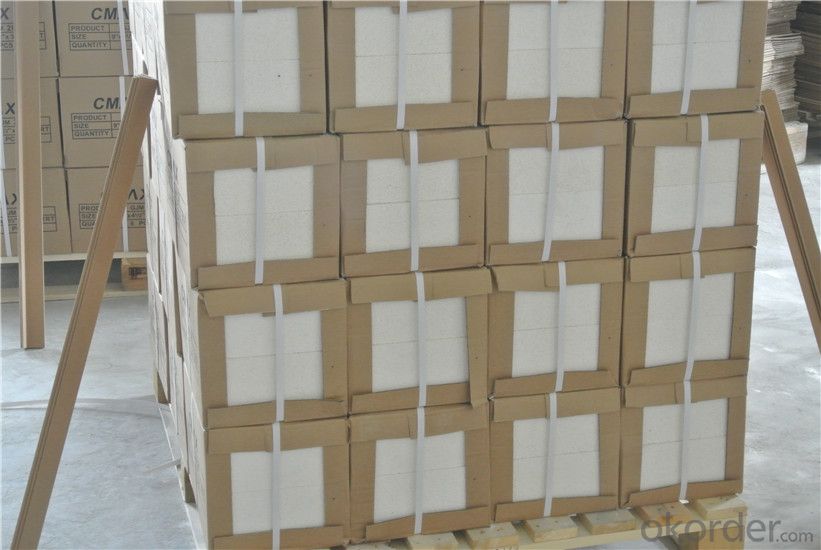
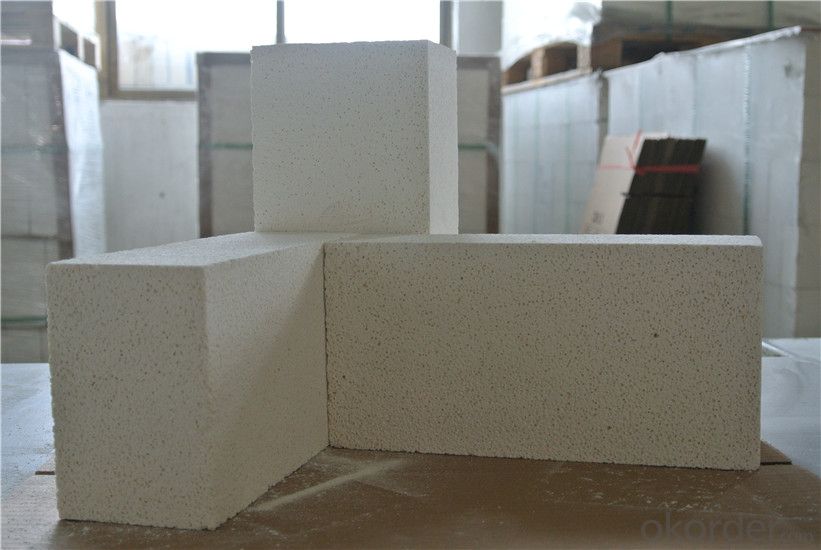
- Q: Are insulating fire bricks suitable for use in autoclaves?
- The utilization of insulating fire bricks in autoclaves is typically not suitable. Autoclaves, which are utilized for sterilization, curing, and material testing, create high-temperature and high-pressure environments. Insulating fire bricks are primarily intended for reducing heat loss and providing insulation in applications involving high temperatures. However, autoclaves necessitate materials capable of withstanding both high temperatures and high pressures. Insulating fire bricks are not designed to withstand the high pressures commonly encountered in autoclaves, and employing them in such environments may result in structural failure or damage. To ensure the safety and durability of the equipment, it is recommended to use refractory bricks or materials specifically engineered for high-temperature and high-pressure conditions in autoclave applications. These materials are designed to endure the extreme conditions found within autoclaves.
- Q: How long do insulating fire bricks last?
- Insulating fire bricks are designed to withstand high temperatures and provide excellent insulation properties. The lifespan of insulating fire bricks can vary depending on several factors such as the quality of the bricks, the temperature they are exposed to, and how well they are maintained. Generally, insulating fire bricks can last for several years, often ranging from 10 to 20 years or even longer. However, it is important to note that the lifespan can be significantly reduced if the bricks are exposed to extreme temperatures or thermal shock on a regular basis. Regular maintenance and proper usage can also extend the lifespan of insulating fire bricks. This includes regular cleaning to remove any debris or build-up that can impact their performance. It is also important to avoid sudden temperature changes or excessive stress on the bricks, as this can lead to cracking or damage. Overall, the longevity of insulating fire bricks can vary, but with proper care and maintenance, they can provide reliable insulation for many years in high-temperature applications.
- Q: Can insulating fire bricks be used in reheating furnaces?
- Yes, insulating fire bricks can be used in reheating furnaces. Insulating fire bricks are designed to have excellent thermal insulation properties, which makes them ideal for use in high-temperature applications such as reheating furnaces. These bricks have low thermal conductivity, meaning they can effectively retain and reflect heat, resulting in energy savings and improved heating efficiency. Additionally, insulating fire bricks are lightweight and have good resistance to thermal shock, making them durable and suitable for the rapid temperature changes experienced in reheating furnaces. Overall, insulating fire bricks are a suitable choice for insulating and lining the walls of reheating furnaces, providing efficient heat retention and helping to maintain uniform temperatures throughout the furnace.
- Q: Can insulating fire bricks be used in the construction of foundry molds?
- Yes, insulating fire bricks can be used in the construction of foundry molds. Insulating fire bricks are designed to withstand high temperatures and provide excellent thermal insulation properties, which make them suitable for use in foundry molds. These bricks help to maintain a consistent temperature within the mold, ensuring efficient and effective casting processes.
- Q: How do insulating fire bricks affect the overall sustainability of a structure?
- Insulating fire bricks play a crucial role in enhancing the overall sustainability of a structure. These bricks are designed to have low thermal conductivity, which helps in minimizing heat loss from the building. By providing effective insulation, they contribute to energy efficiency by reducing the need for excessive heating or cooling. This, in turn, leads to lower energy consumption and reduced carbon emissions, making the structure more environmentally friendly. Furthermore, insulating fire bricks have excellent durability, enabling them to withstand high temperatures and extreme conditions, resulting in longer-lasting structures that require fewer repairs and replacements. Overall, insulating fire bricks enhance the sustainability of a structure by improving energy efficiency and durability, leading to reduced environmental impact and long-term cost savings.
- Q: What is the typical porosity of an insulating fire brick?
- The specific type and composition of an insulating fire brick influence its typical porosity, which can vary. Generally, insulating fire bricks have a porosity range of 40% to 70%. Porosity refers to the presence of open space or voids within the brick structure, which enhances its thermal insulation properties by minimizing heat transfer. The brick's insulation capability improves as its porosity increases. Manufacturers of insulating fire bricks typically target a specific porosity range to achieve the desired thermal conductivity and insulation efficiency.
- Q: Are insulating fire bricks suitable for insulation in cryogenic applications?
- Yes, insulating fire bricks are suitable for insulation in cryogenic applications. Insulating fire bricks are made from lightweight refractory materials that have excellent thermal insulation properties. They have low thermal conductivity, high melting points, and are able to withstand extremely low temperatures, making them ideal for cryogenic applications. Cryogenic applications involve handling and storing materials at very low temperatures, typically below -150 degrees Celsius (-238 degrees Fahrenheit). Insulating fire bricks are designed to provide effective insulation in such extreme temperatures, preventing heat transfer and maintaining the desired low temperature. Furthermore, insulating fire bricks are chemically stable and have good resistance to thermal shock, meaning they can withstand rapid temperature changes without cracking or deteriorating. This is particularly important in cryogenic applications where temperature fluctuations are common. In addition to their excellent thermal insulation properties, insulating fire bricks are also lightweight and easy to handle, making them convenient for installation in cryogenic systems. Overall, insulating fire bricks are a suitable choice for insulation in cryogenic applications due to their thermal insulation properties, high-temperature resistance, chemical stability, and resistance to thermal shock.
- Q: Can insulating fire bricks be used in glass furnaces?
- Glass furnaces can indeed utilize insulating fire bricks. These bricks are specifically engineered with low thermal conductivity, rendering them ideal for high-temperature environments such as glass furnaces. The implementation of these bricks aids in the reduction of heat loss from the furnace, consequently enhancing energy efficiency and decreasing operational expenses. Moreover, they offer superior insulation and aid in maintaining consistent temperatures within the furnace, a vital factor in glass production. Furthermore, insulating fire bricks exhibit excellent resistance to thermal shock and can endure the extreme temperatures and rapid temperature fluctuations that are common in glass furnaces. Overall, integrating insulating fire bricks into glass furnaces can result in enhanced furnace performance, heightened productivity, and energy conservation.
- Q: Can insulating fire bricks be used in the construction of steam boilers?
- Yes, insulating fire bricks can be used in the construction of steam boilers. They are designed to have high thermal resistance, low heat conductivity, and excellent insulation properties, which make them suitable for use in steam boilers. Insulating fire bricks help to retain heat efficiently, reduce energy loss, and improve the overall efficiency of the boiler system.
- Q: Can insulating fire bricks be used in kilns?
- Yes, insulating fire bricks can be used in kilns. Insulating fire bricks are designed to withstand high temperatures and provide excellent insulation, making them ideal for use in kilns. They have a low thermal conductivity, which helps to retain the heat generated within the kiln, ensuring efficient and uniform heating. Additionally, insulating fire bricks are lightweight, which makes them easy to handle and install in kilns. They are also resistant to thermal shock, meaning they can withstand rapid changes in temperature without cracking or breaking. Overall, insulating fire bricks are a reliable and effective choice for use in kilns.
Send your message to us
Insulating Fire Brick - JM Mullite Thermal Storage Bricks Thermal Insulating Brick
- Loading Port:
- Tianjin
- Payment Terms:
- TT OR LC
- Min Order Qty:
- 2 m.t.
- Supply Capability:
- 1000 m.t./month
OKorder Service Pledge
OKorder Financial Service
Similar products
Hot products
Hot Searches
Related keywords
